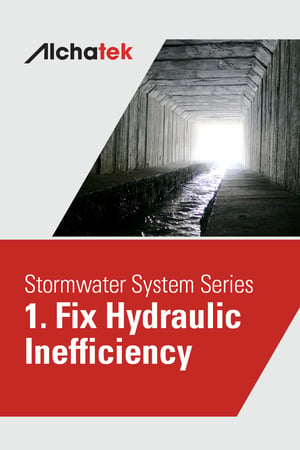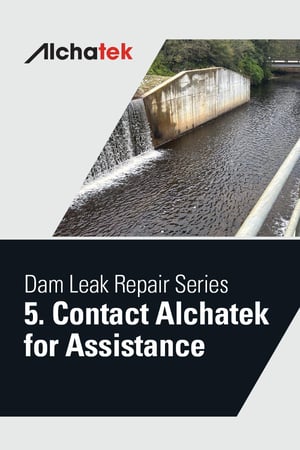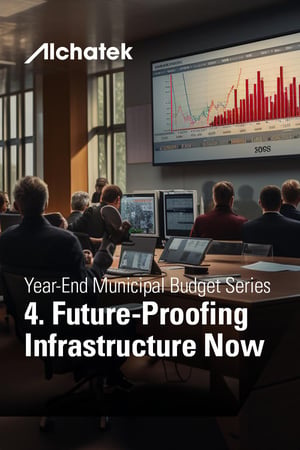
 When it comes to sealing leaks in stormwater systems, one size does not fit all. Whether dealing with curb inlets, drop inlets, manholes, or culverts, the choice of sealing material plays a pivotal role in the success and longevity of the repair. Cementitious grouts and polyurethane grouts represent the main contenders in the field. Knowing when and where to use each is crucial for a sustainable solution.
When it comes to sealing leaks in stormwater systems, one size does not fit all. Whether dealing with curb inlets, drop inlets, manholes, or culverts, the choice of sealing material plays a pivotal role in the success and longevity of the repair. Cementitious grouts and polyurethane grouts represent the main contenders in the field. Knowing when and where to use each is crucial for a sustainable solution.
Cementitious Grouts: Old but Gold?
Cementitious grouts have been around for quite some time and are often the go-to option for many maintenance teams. Composed of a mixture of cement, sand, and water, these grouts provide a robust but somewhat rigid seal. They are best suited for areas where minimal movement is expected post-repair, such as static joints or stable concrete structures.
Pros:
- Economical and readily available
- Easy to mix and apply
- Excellent for filling large gaps and voids
Cons:
- Limited flexibility; may crack under stress or movement
- Longer curing time, delaying return-to-service
- Potential for shrinkage, compromising the seal
Polyurethane Grouts: The Future of Sealing
Polyurethane grouts have emerged as a modern, versatile option for sealing leaks. These grouts react with water to expand, filling cracks and gaps with a flexible, water-resistant seal. They are particularly effective for dynamic systems that may experience ongoing stress or movement.
Pros:
- Excellent flexibility; adapts to structural movement
- Quick cure times facilitate rapid return-to-service
- Effective in a wide range of conditions and materials
Cons:
- More expensive upfront cost
- Requires specialized equipment for application
- Skill-intensive; necessitates trained personnel for effective application
Location-Specific Choices
Certain leaks necessitate specific sealing methods based on their location within the stormwater system. For example, curb inlets often fare better with polyurethane grouts due to the frequent movement from vehicular traffic. On the other hand, stable, non-dynamic structures like concrete walls may be adequately served by cementitious grouts.
Deciding Factors in Choice
When choosing a sealing method, maintenance teams should consider factors such as:
- Type and location of the leak
- Expected post-repair environmental conditions
- Budget constraints
- Availability of skilled labor and specialized equipment
- Required longevity of the repair
Training and Expert Consultation
Given the complexities involved in choosing the right sealing method, training and consultation with experts in the field are highly recommended. Properly trained personnel are more likely to make the right choice the first time, reducing the risk of future leaks and subsequent repairs.
Key Takeaways
The choice of sealing method is a multi-faceted decision that requires a comprehensive understanding of the leak's nature, the system's requirements, and the pros and cons of available options. Regular training and expert consultation can go a long way in ensuring that maintenance teams are equipped to make the best choice for sustainable and effective leak sealing.




 Leaks in stormwater systems can be elusive, often manifesting their symptoms far from the actual point of origin. This is especially true for interconnected systems like manholes or box culverts, where water can travel significant distances before showing visible signs of a leak. Accurate identification of the leak source is crucial for any effective repair operation. Failure to correctly locate the leak can result in wasted time, resources, and ultimately, unsuccessful repair.
Leaks in stormwater systems can be elusive, often manifesting their symptoms far from the actual point of origin. This is especially true for interconnected systems like manholes or box culverts, where water can travel significant distances before showing visible signs of a leak. Accurate identification of the leak source is crucial for any effective repair operation. Failure to correctly locate the leak can result in wasted time, resources, and ultimately, unsuccessful repair.
 Hydraulic inefficiency in stormwater systems can wreak havoc in urban settings, especially during times of heavy rainfall or storms. When stormwater systems become less effective in draining water, it increases the risk of localized flooding and may even contribute to infrastructure failure. The problem often boils down to leaks and cracks in crucial components like curb inlets, drop inlets, manholes, and culverts.
Hydraulic inefficiency in stormwater systems can wreak havoc in urban settings, especially during times of heavy rainfall or storms. When stormwater systems become less effective in draining water, it increases the risk of localized flooding and may even contribute to infrastructure failure. The problem often boils down to leaks and cracks in crucial components like curb inlets, drop inlets, manholes, and culverts.
 Effectively repairing and sealing leaks in dams requires specialized expertise and high-quality materials. At Alchatek, we have spent decades developing and manufacturing premium polyurethane grouts designed specifically for waterproofing and protecting critical infrastructure like dams.
Effectively repairing and sealing leaks in dams requires specialized expertise and high-quality materials. At Alchatek, we have spent decades developing and manufacturing premium polyurethane grouts designed specifically for waterproofing and protecting critical infrastructure like dams.
 When it comes to dam management, the focus often rests on structural integrity and operational efficiency. However, the environmental implications of dam leaks are equally critical. Leaks can lead to a range of downstream consequences, affecting not just human communities but also aquatic life and entire ecosystems.
When it comes to dam management, the focus often rests on structural integrity and operational efficiency. However, the environmental implications of dam leaks are equally critical. Leaks can lead to a range of downstream consequences, affecting not just human communities but also aquatic life and entire ecosystems.
 In the realm of dam management, energy efficiency often stands as a cornerstone of operational success. While dams serve a variety of functions, from water storage to flood control, the optimization of energy production remains a critical concern. Structural weaknesses, such as leaks and cracks, can significantly hamper a dam's ability to generate power, leading to increased operational costs and reduced effectiveness.
In the realm of dam management, energy efficiency often stands as a cornerstone of operational success. While dams serve a variety of functions, from water storage to flood control, the optimization of energy production remains a critical concern. Structural weaknesses, such as leaks and cracks, can significantly hamper a dam's ability to generate power, leading to increased operational costs and reduced effectiveness.
 Sediment accumulation in dams is a concern that often goes unnoticed until it becomes a significant problem. Over time, sediment carried by the water can settle at the bottom of the dam, reducing its storage capacity and affecting its functionality. This build-up can also lead to increased pressure on the dam structure, making it more susceptible to leaks and cracks.
Sediment accumulation in dams is a concern that often goes unnoticed until it becomes a significant problem. Over time, sediment carried by the water can settle at the bottom of the dam, reducing its storage capacity and affecting its functionality. This build-up can also lead to increased pressure on the dam structure, making it more susceptible to leaks and cracks.
 Erosion in dams is a silent but potent threat that can compromise the structural integrity of these vital pieces of infrastructure. Over time, water leaks through cracks and joints in the concrete can lead to the gradual wearing away of material. This phenomenon is not just a maintenance issue; it poses a significant risk to the dam's overall stability and safety.
Erosion in dams is a silent but potent threat that can compromise the structural integrity of these vital pieces of infrastructure. Over time, water leaks through cracks and joints in the concrete can lead to the gradual wearing away of material. This phenomenon is not just a maintenance issue; it poses a significant risk to the dam's overall stability and safety.
 Alchatek specializes in cutting-edge solutions for infrastructure repair, including the use of polyurethane grouts for sealing leaks. In addition to manufacturing repair materials, we can refer you to contractors skilled in a wide range of applications, from crack injection to curtain wall grouting and more. We're passionate about helping municipalities and other organizations make the most of their budgets while ensuring the long-term integrity of their infrastructure.
Alchatek specializes in cutting-edge solutions for infrastructure repair, including the use of polyurethane grouts for sealing leaks. In addition to manufacturing repair materials, we can refer you to contractors skilled in a wide range of applications, from crack injection to curtain wall grouting and more. We're passionate about helping municipalities and other organizations make the most of their budgets while ensuring the long-term integrity of their infrastructure.
 Proactive budget planning is essential, especially as the fiscal year nears its end, for sustainable city growth. Advanced leak sealing demonstrates an impactful way to utilize end-of-year budgets. Strategic spending can yield long-term municipal benefits through enhanced infrastructure integrity. Forward-thinking budget optimization, aided by innovative repair and maintenance solutions, is key for sustainable, resilient growth.
Proactive budget planning is essential, especially as the fiscal year nears its end, for sustainable city growth. Advanced leak sealing demonstrates an impactful way to utilize end-of-year budgets. Strategic spending can yield long-term municipal benefits through enhanced infrastructure integrity. Forward-thinking budget optimization, aided by innovative repair and maintenance solutions, is key for sustainable, resilient growth.